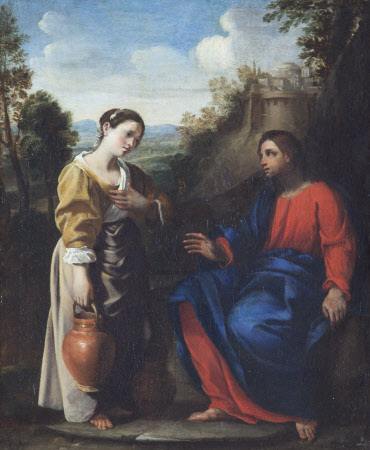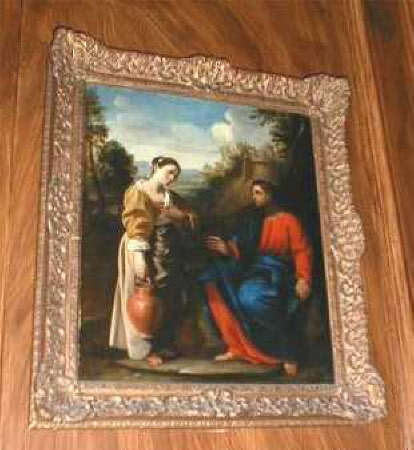Christ and the Woman of Samaria
Italian (Bolognese) School
Category
Art / Oil paintings
Date
1600 - 1699
Materials
Oil on canvas
Measurements
600 x 520 mm
Place of origin
Bologna
Order this imageCollection
Belton House, Lincolnshire
NT 436092
Caption
The scene is taken from the Gospel according to John in The Bible. The Samarian woman is about to draw water from Jacob’s Well when she encounters Christ. The woman, who had five husbands, and was living with another man, was ostracised by her own people. Moreover, Jews would not speak to the people of Samaria. Spurned by all communities, the woman was singled out by Christ, who revealed himself to her as the Messiah, as a demonstration of his love for and forgiveness of all humanity.
Summary
Oil painting on canvas, Christ and the Woman of Samaria, Italian (Bolognese) School, 17th century. Two figures, full length with the woman standing on the left and Christ seated on the right, in a landscape. The woman from Samaria, a town whose inhabitants the Jews considered outcasts, was the first person to whom Christ revealed himself as the Messiah, thus demonstrating that his mission was not to the Jews alone. As related in the biblical gospel of John (4:1-30), Christ paused at Jacob's Well on the way from Judaea to Galilee and asked for a drink. As an adulteress and rejected by her own people, the woman was astonished but Christ said: "Everyone who drinks the water will be thirsty again, but whoever drinks the water I shall give him will never suffer thirst anymore."
Credit line
Belton House, The Brownlow Collection (acquired with the help of the National Heritage Memorial Fund by the National Trust in 1984)
Makers and roles
Italian (Bolognese) School, artist previously catalogued as attributed to Giovanni Francesco Romanelli (1610 – Viterbo 1662), artist previously catalogued as attributed to Ludovico Carracci (Bologna 1555 - Bologna 1619), artist

